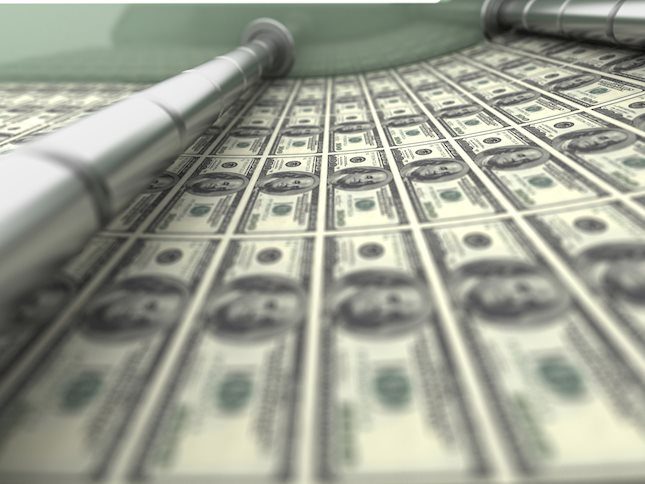US Dollar recovers as Powell's cools down the dovish hype
- US Dollar declined after the Federal Reserve unexpectedly cut rates by 50 basis points to 4.75%-5.00%.
- Fed lowered its 2024 GDP growth forecast and raised its unemployment rate projections.
- Median projection for the Fed funds rate is revised down to 2.9% for the end of 2027.
The US Dollar Index DXY which measures the value of the USD against a basket of currencies tumbled to its lowest point since July 2023 after the Federal Reserve (Fed) unexpectedly implemented a significant 50 basis point (bps) reduction in interest rates. This move lowered the target range for the federal funds rate to 4.75%-5.00%. The Fed's decision signaled a shift in its monetary policy stance and sent shockwaves through the market, leading to a decline in the value of the US Dollar.
The USD may witness further declines due to the Federal Reserve's readiness to implement additional interest rate cuts. This anticipation arises from the Fed's shift in stance, indicating that it is prepared to take more aggressive action if economic conditions warrant it.
Daily digest market movers: US Dollar declines on Fed's unexpected 50 bps rate cut
- The Federal Reserve unexpectedly cut rates by 50 basis points to 5%, marking a significant shift in monetary policy.
- Federal policymakers lowered their GDP growth forecast for 2024 to 2%, down from the previous estimate of 2.1%.
- The unemployment rate is projected to remain elevated at 4.4% by the end of 2024 and 2025, above the previous forecast of 4.2%.
- The median projection for the Fed funds rate at the end of 2027 is 2.9%.
- The Federal Reserve's median view for the funds rate at the end of 2024 is revised down to 4.4%, compared to the prior estimate of 5.1%.
- During the presser, Federal Reserve Chairman Jerome Powell expressed confidence in the inflation outlook and the balance of risks.
- He also stated that the bank will move slower or faster according to the incoming data.
DXY technical outlook: Selling pressure mounts, indicators deep in negative terrain
Technical analysis of the DXY index suggests a negative outlook, with indicators remaining in negative territory. In addition, the loss of the 20-day Simple Moving Average (SMA) indicates a fading buying momentum.
The Relative Strength Index (RSI) is pointing downwards and remains below 50, indicating bearish sentiment. The Moving Average Convergence Divergence (MACD) is printing lower green bars, further supporting the bearish trend. Supports are identified at 100.50, 100.30 and 100.00, while resistance levels lie at 101.00, 101.30 and 101.60.
Inflation FAQs
Inflation measures the rise in the price of a representative basket of goods and services. Headline inflation is usually expressed as a percentage change on a month-on-month (MoM) and year-on-year (YoY) basis. Core inflation excludes more volatile elements such as food and fuel which can fluctuate because of geopolitical and seasonal factors. Core inflation is the figure economists focus on and is the level targeted by central banks, which are mandated to keep inflation at a manageable level, usually around 2%.
The Consumer Price Index (CPI) measures the change in prices of a basket of goods and services over a period of time. It is usually expressed as a percentage change on a month-on-month (MoM) and year-on-year (YoY) basis. Core CPI is the figure targeted by central banks as it excludes volatile food and fuel inputs. When Core CPI rises above 2% it usually results in higher interest rates and vice versa when it falls below 2%. Since higher interest rates are positive for a currency, higher inflation usually results in a stronger currency. The opposite is true when inflation falls.
Although it may seem counter-intuitive, high inflation in a country pushes up the value of its currency and vice versa for lower inflation. This is because the central bank will normally raise interest rates to combat the higher inflation, which attract more global capital inflows from investors looking for a lucrative place to park their money.
Formerly, Gold was the asset investors turned to in times of high inflation because it preserved its value, and whilst investors will often still buy Gold for its safe-haven properties in times of extreme market turmoil, this is not the case most of the time. This is because when inflation is high, central banks will put up interest rates to combat it. Higher interest rates are negative for Gold because they increase the opportunity-cost of holding Gold vis-a-vis an interest-bearing asset or placing the money in a cash deposit account. On the flipside, lower inflation tends to be positive for Gold as it brings interest rates down, making the bright metal a more viable investment alternative.
Forex News
Keep up with the financial markets, know what's happening and what is affecting the markets with our latest market updates. Analyze market movers, trends and build your trading strategies accordingly.















